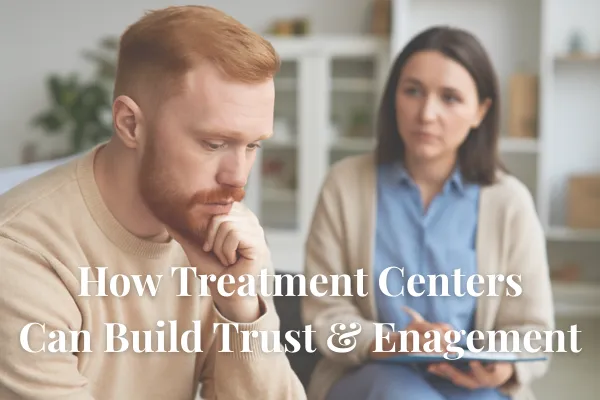
How Treatment Centers Can Build Trust and Engagement: A Winning Content Strategy
In today’s digital-first world, families searching for behavioral health support are turning to the internet with questions, fears, and hope. Treatment centers have a critical opportunity to meet them there—not just with ads or offers, but with content that builds trust, reduces stigma, and guides people toward life-changing care.
The right content strategy doesn’t just increase visibility. It positions your center as a safe, credible, and compassionate place to turn when people need it most.
Here’s what to focus on.
The Most Effective Content Types for Treatment Centers
Educational Blog Posts
A blog is more than an SEO play—it’s your chance to become a trusted guide. Create articles that answer common questions, explain treatment options, and offer hope through helpful insights. These posts give overwhelmed families clarity and reassurance while helping your center show up in search results.
Pro Tip: Create a paid content distribution engine using this content. Your treatment center will be front and center right when people need answers the most. See how this fits into your marketing strategy with this free download.

Personal Stories and Testimonials
There is nothing more powerful than a real story of healing. Patient testimonials and recovery journeys help families believe that recovery is possible. These stories also break down stigma and offer proof that your center is a place where transformation happens.
Videos and Virtual Tours
Video content creates connection. Quick facility tours, staff introductions, and short explainers of your programs help reduce anxiety and increase transparency. When someone can visualize what their next step might look like, they’re far more likely to take it.
Social Media Content
Social platforms like Facebook, Instagram, and TikTok aren’t just for promotion—they’re for human connection. Post inspirational messages, quick mental health tips, and behind-the-scenes moments. When your center shows up consistently with real, relatable content, it becomes familiar and approachable.
Long-Form Resources (Guides, E-books)
Some families need more detailed answers before they feel ready to act. Create downloadable resources like “How to Choose a Treatment Center” or “Understanding Insurance for Behavioral Health.” These assets not only build trust—they can also serve as lead magnets for follow-up.
Webinars and Podcasts
Hosting live webinars or launching a podcast lets your team go deeper. Feature clinicians, alumni, and guest experts to unpack complex topics with empathy and clarity. It’s a format that builds authority while making your team feel more human.
Key Topics to Prioritize in Your Content
Recognizing Signs and Symptoms
Many people delay seeking help because they’re unsure if their situation is “serious enough.” Your content can bridge that gap by clearly explaining symptoms, conditions, and what to watch for—without judgment.
Explaining Treatment Options and What to Expect
Uncertainty is a major barrier. Create content that explains what happens during treatment, how programs work, and what daily life is like inside your center. Transparency builds trust.

Navigating Barriers to Care
Families face real obstacles—insurance confusion, financial worries, social stigma, waitlists. Content that helps them navigate these issues is not just helpful—it’s a lifeline.
Supporting Families and Caregivers
Often, it’s the family doing the research. Offer guidance for how to support a loved one, cope with caregiver stress, and understand the recovery process. The more supported they feel, the more likely they are to reach out.
Relapse Prevention and Aftercare
Recovery doesn’t end with discharge. Create content that supports long-term healing: coping strategies, maintaining sobriety, and accessing ongoing support.
Stigma Reduction and Advocacy
Use your platform to normalize help-seeking. Share facts, bust myths, and celebrate recovery. When you take a stand against stigma, your audience sees you as a leader.
Community Engagement and Coping Strategies
Share tools for managing anxiety, practicing mindfulness, and staying involved in recovery-related events—both online and in person. Community content encourages connection.

Best Practices for Content Creation
Lead with empathy: Use compassionate, non-clinical language. Speak to the heart.
Diversify formats: Use blogs, short-form video, infographics, and audio content.
Answer real questions: Use FAQs from patients and families to guide your topics.
Feature your clinical team: Let your experts shine—it builds trust and credibility.
Engage consistently: Reply to comments, share stories, and encourage interaction.
💭 Final Thoughts
The best content strategy doesn’t start with a calendar. It starts with your audience. What are they afraid of? What are they searching for? What do they need to hear to believe recovery is possible?
When your center creates content that answers those questions with clarity, compassion, and consistency—you become more than just another name on a list. You become the place they trust.
Are you struggling to get more eyeballs on your content? Download this simple chart outlining my strategy to fix this.
